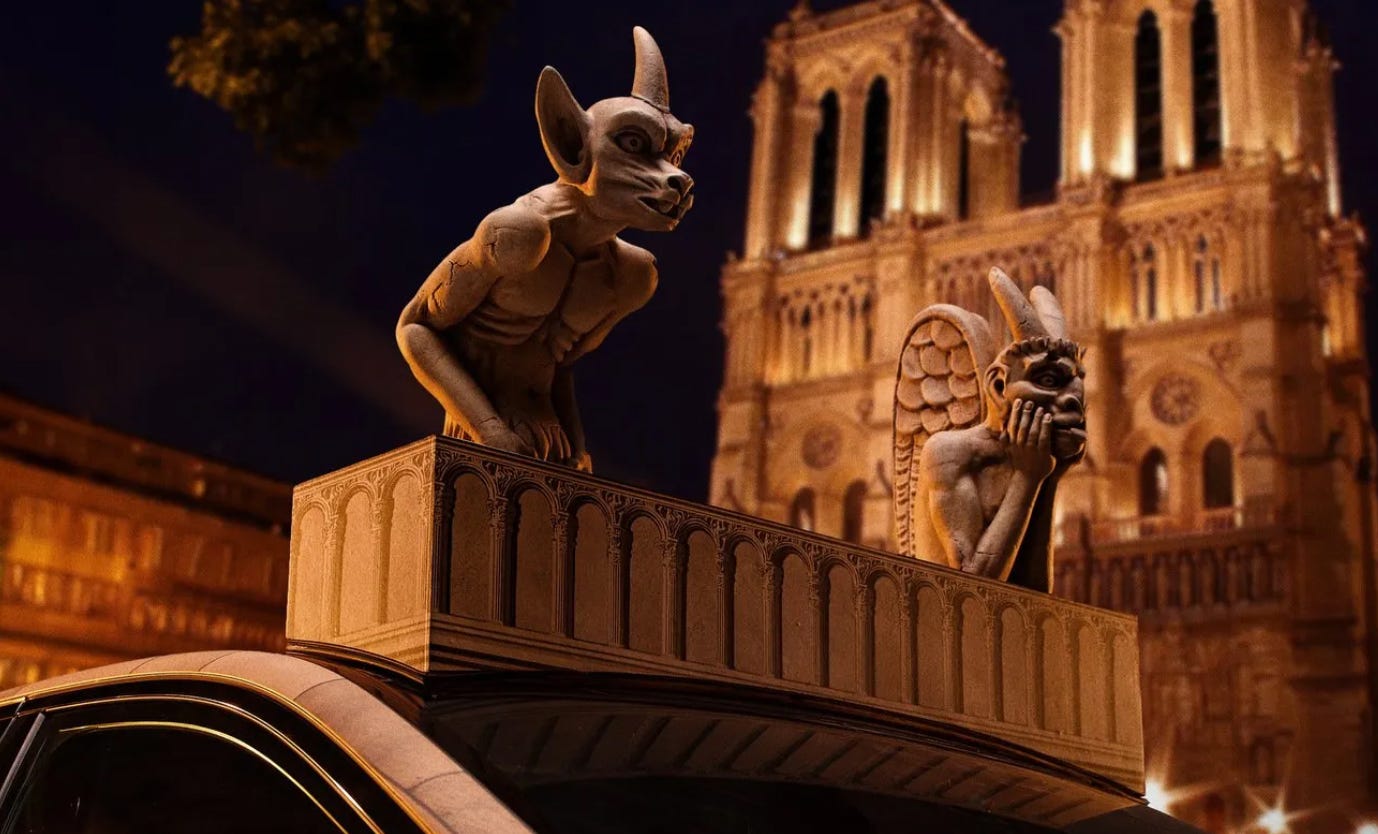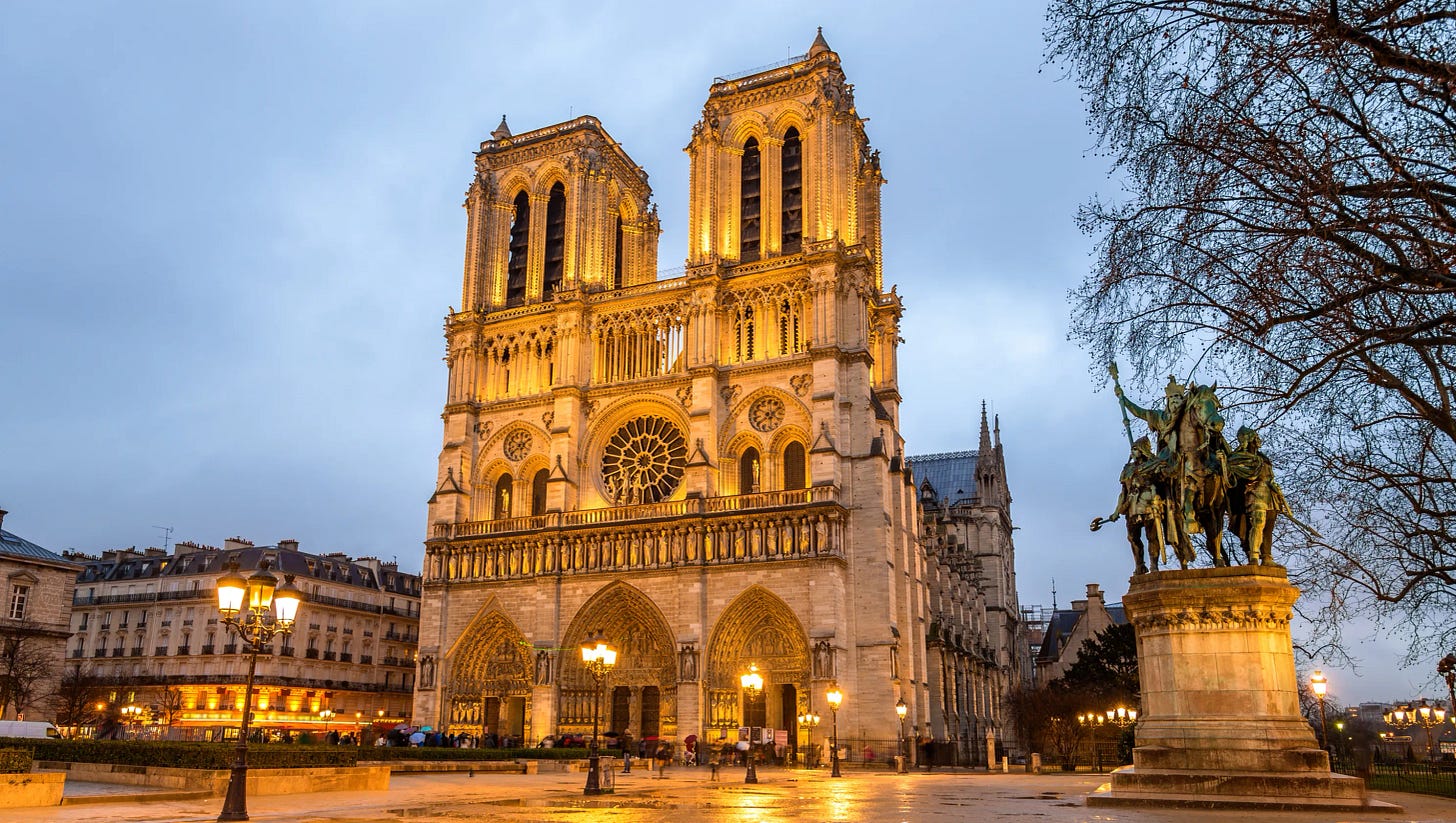Notre Dame: The Bell Tolls for the Sacred
It's a great time to reread Victor Hugo's masterpiece
Victor Hugo’s Notre-Dame de Paris remains less a novel than an incantation, a summoning of stone and shadow, a hymn to the entropic mysteries of time, architecture, and the divine tragicomedy of humanity. Where other novels merely live, Hugo’s book breathes: every page exhaling centuries of Gothic dust, every paragraph a rib of flying buttress, braced against the collapses of history and human folly. To read it is to stand before Notre-Dame itself, feeling dwarfed not just by the cathedral’s mass but by its uncanny vitality—as if the edifice itself were sentient, quietly judging the smallness of your mortal preoccupations.
Commonly known in English as The Hunchback of Notre-Dame, Hugo’s masterpiece is more than a story about Quasimodo’s hunchback or La Esmeralda’s tragic fate. The true protagonist of Hugo’s work is the cathedral itself—a living, breathing edifice that both represents and transcends architecture. It is an object not simply of aesthetic admiration but of profound symbolic and metaphysical weight, a repository of history, culture, and spirit. The cathedral stands as a microcosm of medieval France, reflecting the values, struggles, and complexities of the civilization that created it. In Hugo’s hands, the cathedral becomes a mirror, reflecting both the culture of its creators and the tumultuous political and social forces of its time. It is also a monument to the forces that sought to preserve it and those that have longed to destroy it.
Hugo’s declaration that “Ceci tuera cela” (“This will kill that”)—a prophetic lament for the ascendency of the printed word over the architectural sermon—rings through the novel as a dirge, but also as a challenge. The cathedral, with its chimeric amalgam of pagan and sacred symbols, refuses to succumb. It absorbs the vandal’s mallet, the revolutionary’s torch, the modernizer’s chisel, reasserting itself through its own scars. Hugo’s quip that “it’s been known for churches to defend themselves” reverberates not merely as a clever turn of phrase but as an existential truth. Notre-Dame, through centuries of defilement and desecration, has acted as its own advocate, its stones bearing witness, defying erasure, and safeguarding the sacred amidst the profane.
Consider Notre-Dame’s turbulent history. During the French Revolution, the cathedral was desecrated, its statues defaced, its treasures looted. It was nearly transformed into a "Temple of Reason," a sacrilegious attempt to strip away its Christian identity and recast it as a symbol of revolutionary ideals. But the cathedral did not succumb. It defended itself—perhaps through the weight of its history, its symbolic power, or simply the unyielding nature of its architecture. It survived not just the revolution’s rage but also the indifferent forces of time, neglect, and political upheaval. When it faced further threats in the 19th century, Hugo’s novel emerged as a clarion call, urging Parisians to reclaim their architectural heritage, to restore what was almost lost to the ravages of time.
The 2019 fire that so nearly reduced Notre-Dame to a charred shell represents yet another chapter in the cathedral’s long struggle for survival. Like Hugo’s characters, who seek meaning within the cathedral’s walls, the building itself has always resisted the forces of decay and destruction. Though the fire was horrific, it also allowed the cathedral to emerge once more, phoenix-like, its rebirth now woven into the fabric of its past. Its continued survival is a testament to the resilience of both architecture and spirit.
In Hugo’s novel, the cathedral’s towering façade, its intricately detailed carvings, and its allegorical friezes are more than just architectural features—they are imbued with narrative weight. The spires that reach into the heavens, the flying buttresses that support the weight of history, the gargoyles that peer over the city like silent sentinels—all are symbols that surpass their physical function. Hugo’s cathedral is not merely a backdrop for the novel’s drama but an active participant in the unfolding story, its very stones a text to be deciphered.
To reread Notre-Dame de Paris on the occasion of the cathedral’s reopening is to be reminded that Hugo’s novel is, itself, a kind of architectural act—a construction of language and narrative that mirrors the cathedral’s intricate interweaving of arches, gargoyles, and rose windows. It is a testament to the power of art to endure, to transcend its moment, to defy the forces that would flatten and trivialize it.






